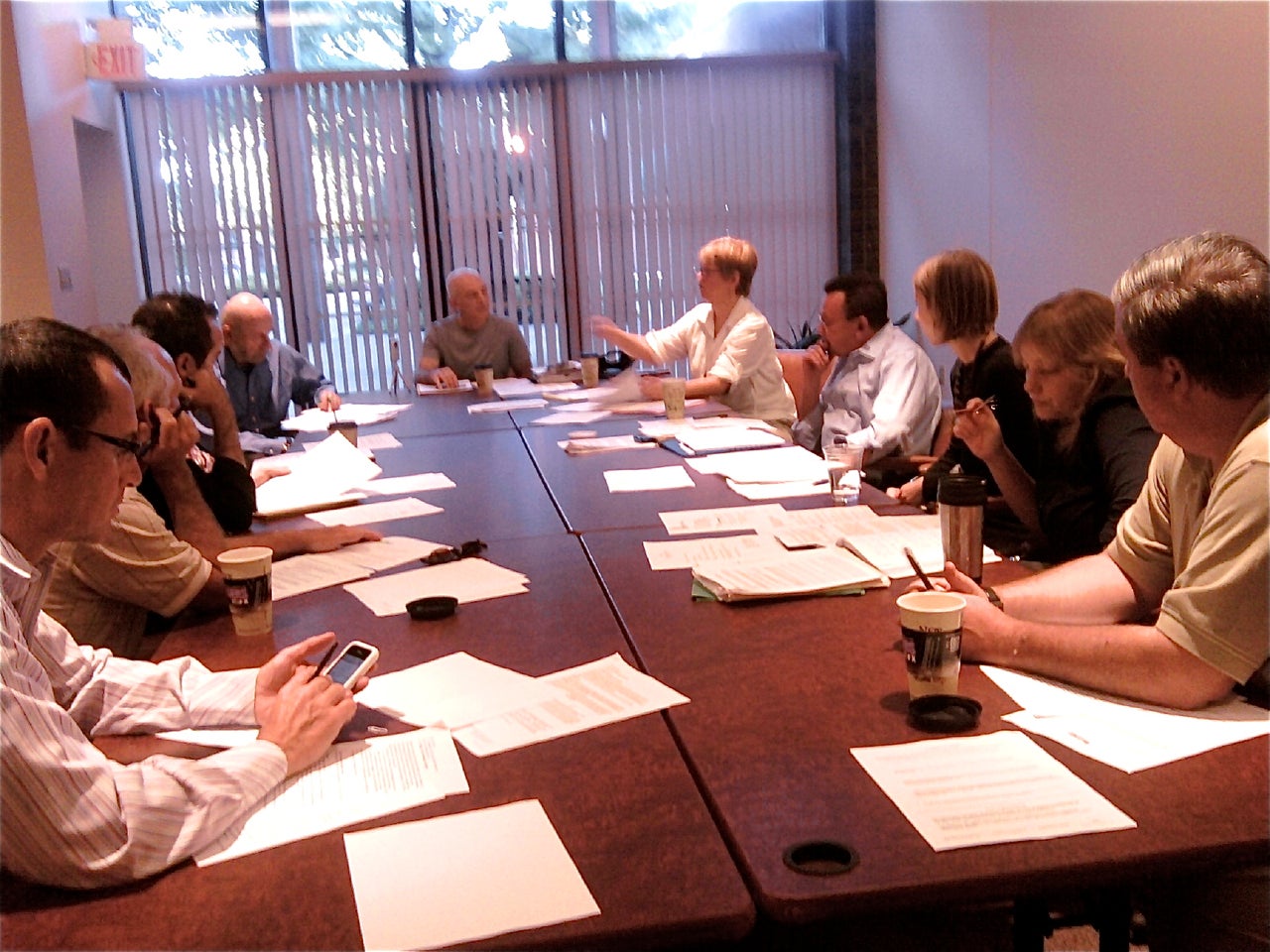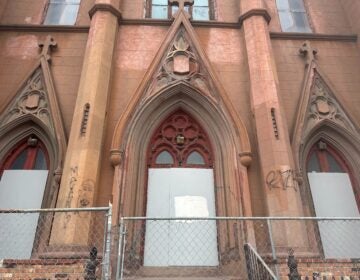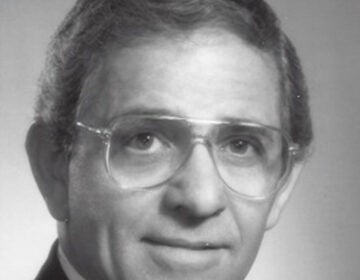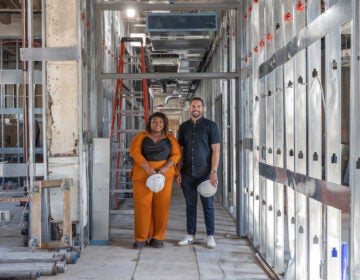CDAG will weigh in on waterfront development compatibility with the Civic Vision, Master Plan

The Central Delaware Advocacy Group wants to weigh in on whether proposed developments do – or do not – fit in with the city’s vision for the future of the waterfront.
But members want to do so in a “use-neutral” way that focuses only on form. And they do not want to encroach on the role of neighborhood civic associations, which vote on development proposals and forward the results to the Philadelphia Planning Commission and City Council.
This discussion, held at Thursday’s meeting, touched on issues that came up when Steve Wynn was planning to get involved with the Foxwoods Casino project. CDAG Chairman Steven Weixler wrote a letter published in The Inquirer back then saying CDAG would like to sit down with Wynn to discuss how the casino design could better reflect the goals established in the Civic Vision for the Central Delaware and the coming Central Delaware Master Plan that is to be heavily based on that vision.
Some CDAG members thought the organization should definitely meet with any developer to discuss Civic Vision-friendly development. But Foxwoods has been controversial, and many of the community organizations represented on CDAG’s board have taken positions against it. And so some members found the proposed discussion unpalatable.
Thursday’s renewal of the discussion was also brought about by a development proposal that has generated strong feelings both pro- and con: A music venue at 2055 Richmond Street, which Fishtowners voted against, 57 to 38, at a late August Fishtown Neighbors Association meeting.
Members agreed that CDAG should always make itself available to civics in an advisory capacity – if a civic organization requests that help – but should not take a position on whether or not a development is right for a community, or whether that community should vote for or against it.
“We cannot be seen as trying to be a “super civic” in competition with our members,” said Weixler.
Weixler said that Fishtown Neighbors leaders did, in fact, request input on how the venue proposed by developer David Grasso matches up with the Civic Vision. He told them that in some ways, it fits right in. The proposal to reuse the existing building and keep its warehouse flair intact is a good fit, he said. But other elements go contrary to the vision, such as the large wall facing Beach Street with virtually no interaction with the street.
Weixler said that once a development proposal goes beyond the civic association level and is before the Planning Commission, CDAG may want to take a less behind-the-scenes role and voice its praise or criticism of a project directly to decision makers. The board agreed this is part of its mission.
Member Jim Moss suggested that the board should consider only weighing in on projects that either greatly exemplify or go terribly contrary to the principles of the Civic Vision and the future Master Plan, which is expected to be finished early next year.
But member Rachel Vassar got strong support for her idea that CDAG weigh in on all development proposals with the exact same mechanism – a list of key goals from the Vision/Master Plan and comments on how well the proposal meets or fails to meet each goal.
In that way, Vassar said, CDAG would remain neutral on all projects, never taking a yes or no stance. Instead, it would provide an objective measure of areas where a developer was hitting the target, and areas in which he or she is not. And CDAG could offer advise on how to do better in the areas that need improvement, she said.
The measuring tool would be modeled after the report card CDAG issued earlier this year, and plans to issue regularly, that talks about how well Philadelphia as a whole is doing in regards to the goals of the Civic Vision.
A quorum was not present at this point in the meeting, but consensus was given that Vassar’s idea should be pursued.
It could not be in place by the time the Richmond Street proposal makes it to the Planning Commission. The Commission is expected to first hear about the proposal at its meeting Sept. 21.
“At this moment, we might be sidelined,” said CDAG member Joe Schiavo after the meeting.
But Weixler said that if Fishtown Neighbors or Olde Richmond Civic Association wants CDAG to talk to the planning commission about how the proposal does and doesn’t fit with the Civic Vision, he will. He also said that if the blank wall facing Beach Street is still part of the proposal, he will speak to the Planning Commission about that, regardless.
CDAG also wants to weigh in on the city’s new zoning code. With the deadline for public comment about a month away, the board voted to reconstitute its zoning committee with a new “watchdog” function. Committee members will meet soon to come up with a recommended position paper to present to the full board. Once accepted, it will go to the Zoning Code Commission.
Vassar, who is outreach coordinator for Penn Future and part of The Next Great City, gave a summary of some of the concerns The Next Great City has about the proposed new Zoning Code. These are posted on PlanPhilly here.
A primary concern – one shared by CDAG – is that the proposed code does not address the waterfront. Instead, it has a place holder, stating that zoning based on the coming Master Plan will be inserted, once the Master Plan is complete. CDAG members said it might be better to insert language based on the existing waterfront overlay, which was established as a stop-gap measure until the Master Plan and related zoning is in place. Or to at least include a paragraph describing the goals for this section.
CDAG members also wanted the committee to look at whether developers could receive incentives to entice them to the waterfront and provide public amenities. For example, a developer who was willing to provide a public atrium might be able to build a taller building. Members also want the committee to investigate whether it makes sense to extend the Center City zone the whole way to the waterfront, as to take advantage of some of the proposed requirements for that area. For example, all of Center City is slated as a Transit Oriented Development area, and developers would get more flexibility in exchange for providing transit connections to their buildings.
Moss cautioned against this. He said there may indeed be things a waterfront zone would want to borrow from the Center City zone, but the waterfront has its own needs.
CDAG also approved new membership policies presented by membership committee chair Laura Lanza. These include guidelines on accepting new members to CDAG, the creation of an advisory group, and means to prevent current members from becoming no-shows. To that end, the representatives of Northern Liberties Neighbors Association, the Delaware River – City Corp, Dickinson Narrows and Franklin Bridge will be getting phone calls warning them they’ve missed at least two consecutive meetings. A letter is sent after three meetings missed, and four missed meetings results in suspension of voting privileges, which can be re-established by regular attendance.
The language in all of this is very much “we need you, please come back and participate” The board also eagerly gave Lanza its consent to move forward with a CDAG-sponsored archaeology event. On Oct. 27, URS archeologist Doug Mooney and others working on the I-95 Girard Avenue project will discuss archaeological finds, show artifacts and talk about the history of key sites, including Cramps Shipyard. PlanPhilly will report the details as they become available.
Reach the reporter at kgates@planphilly.com.
WHYY is your source for fact-based, in-depth journalism and information. As a nonprofit organization, we rely on financial support from readers like you. Please give today.






